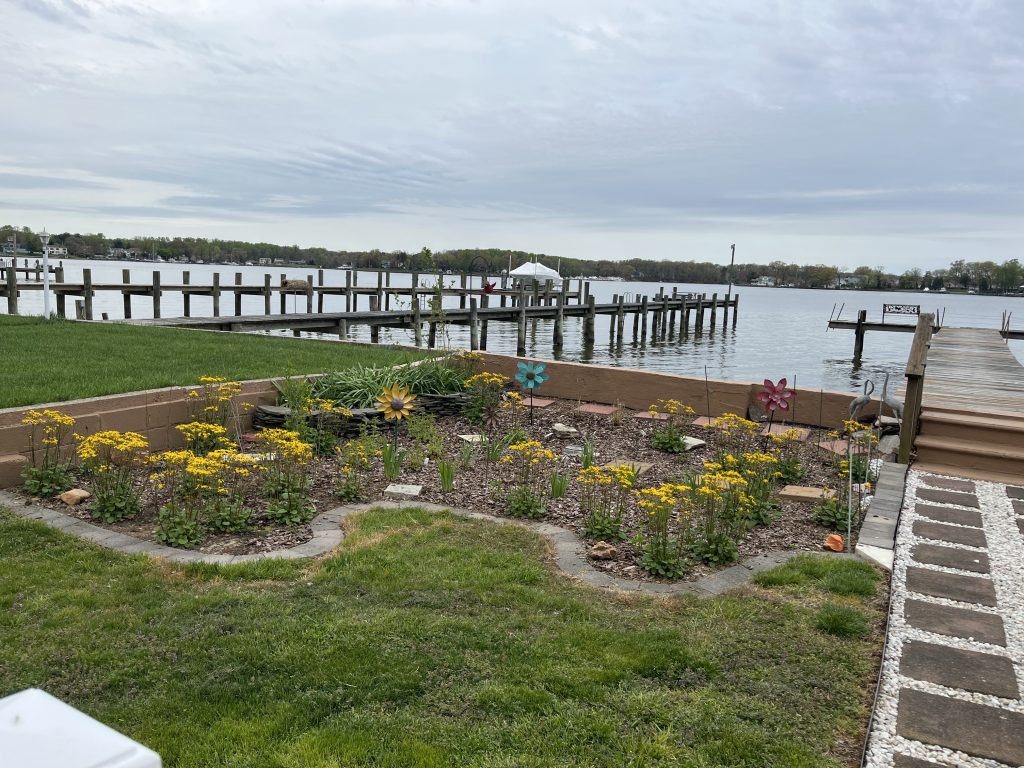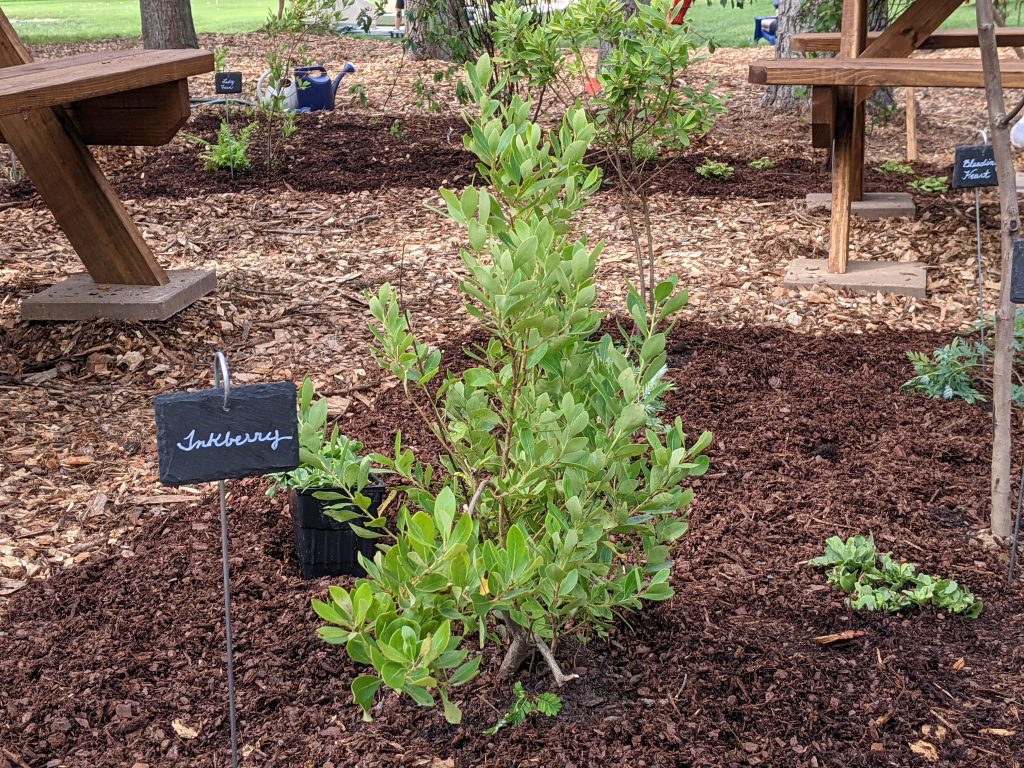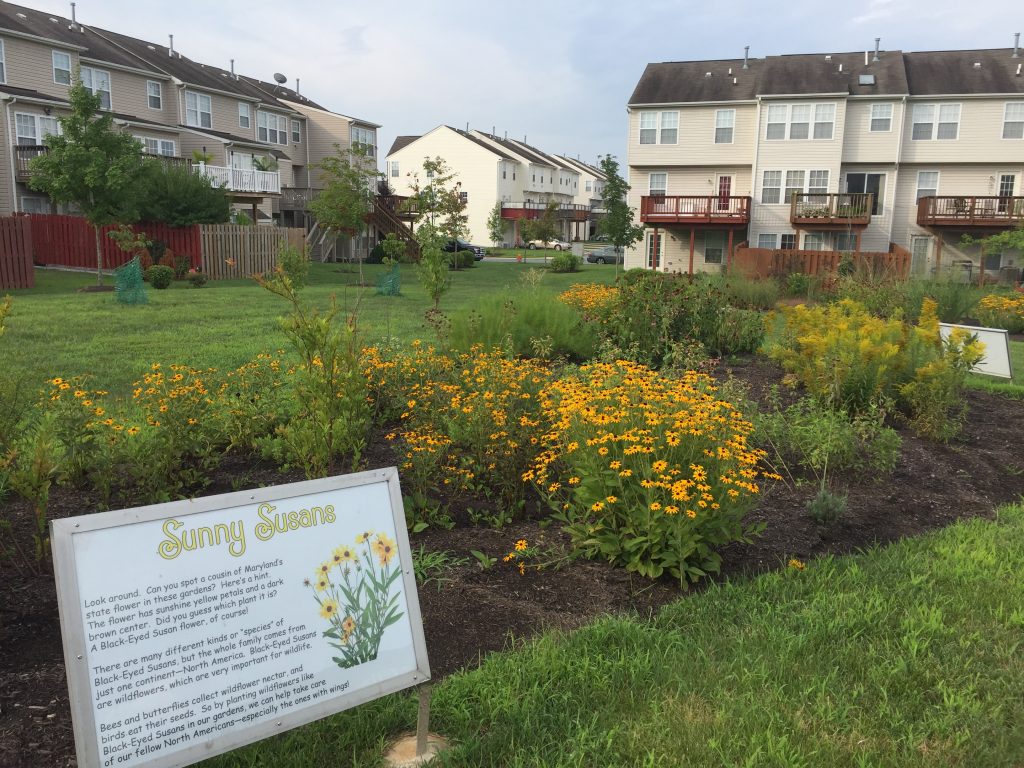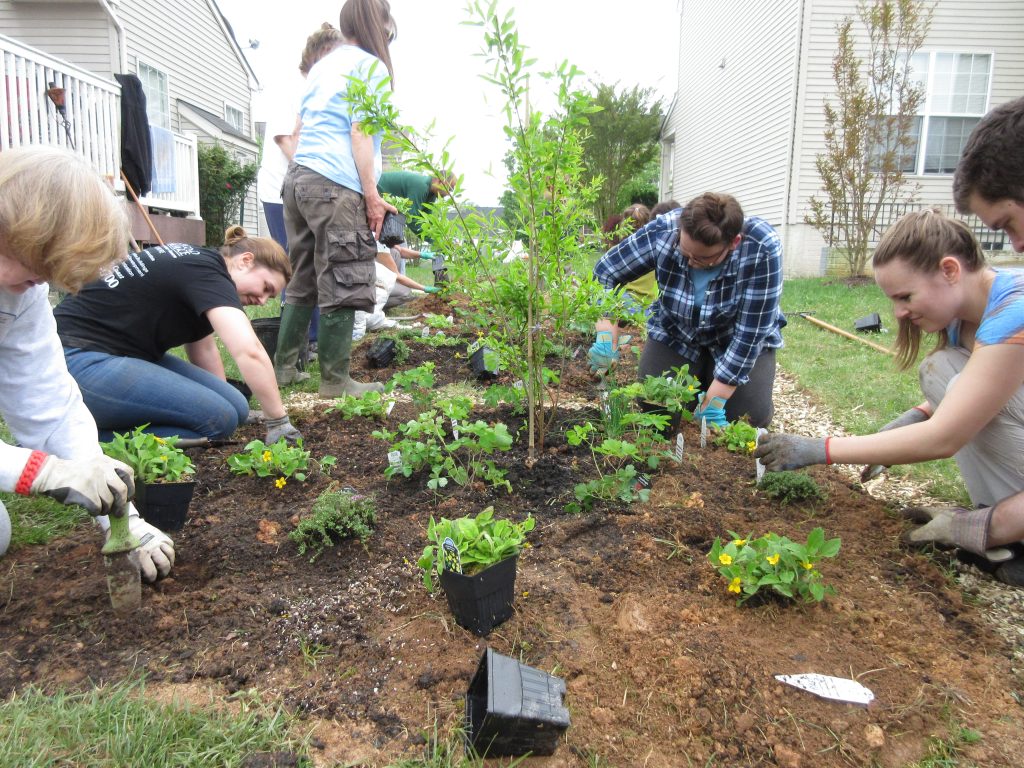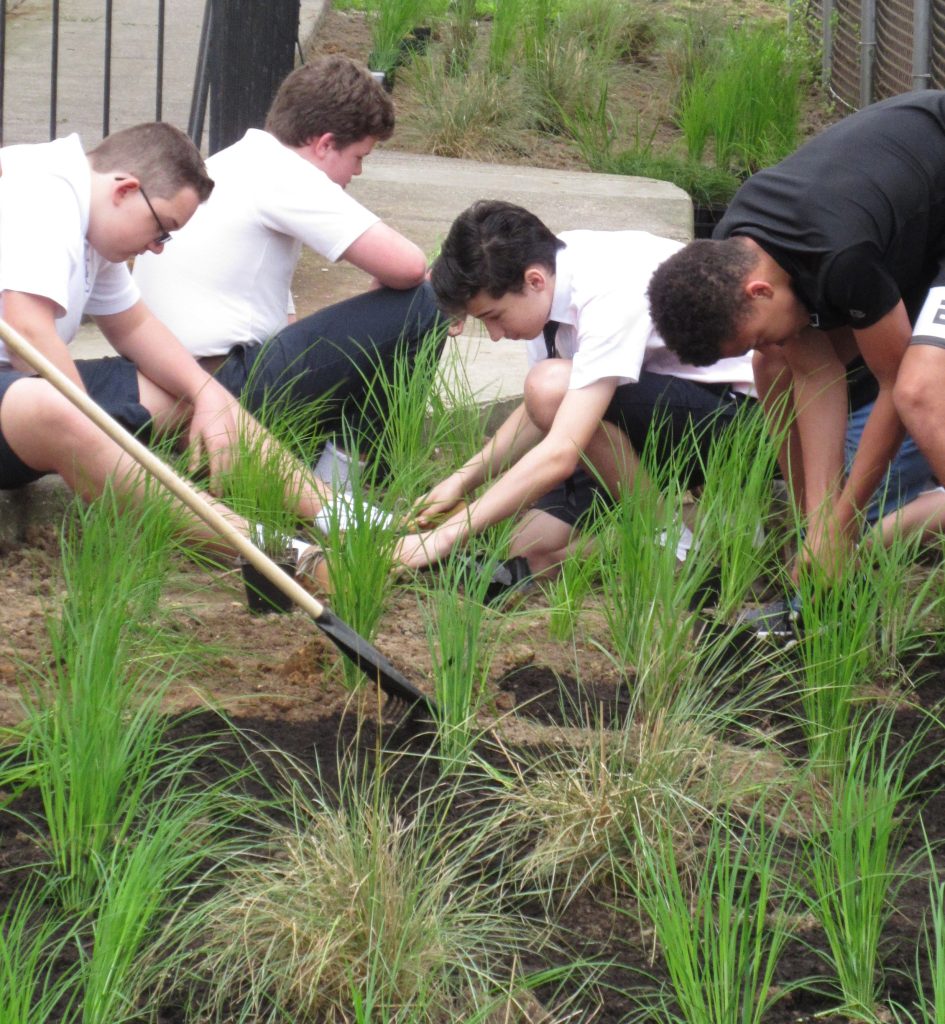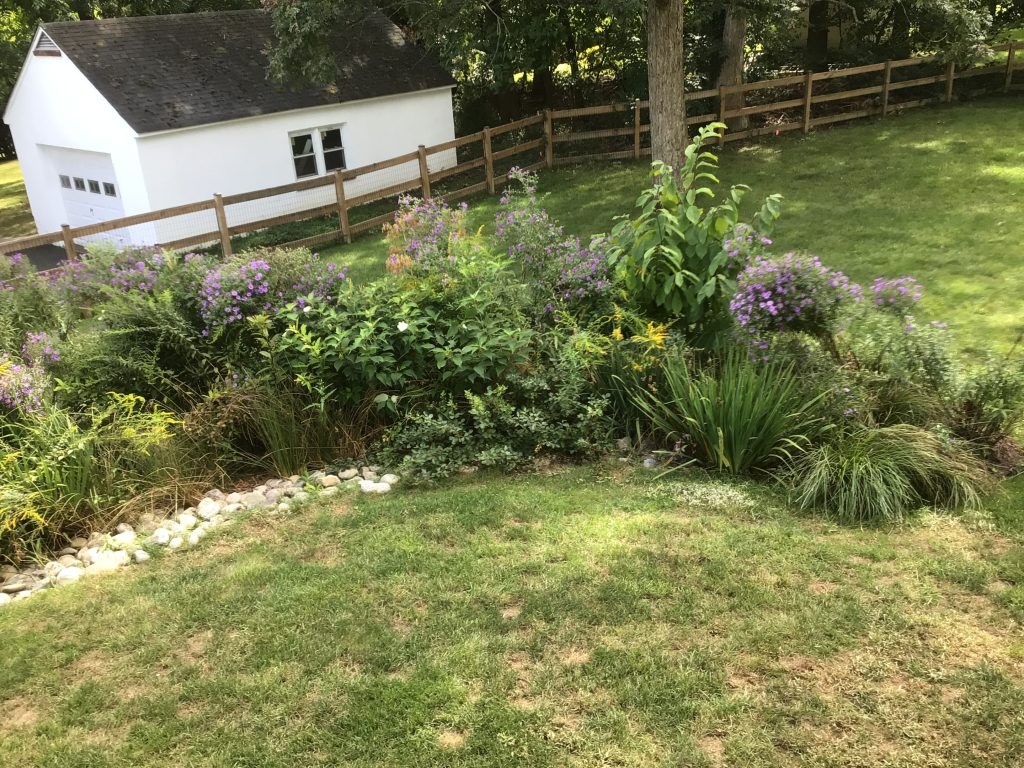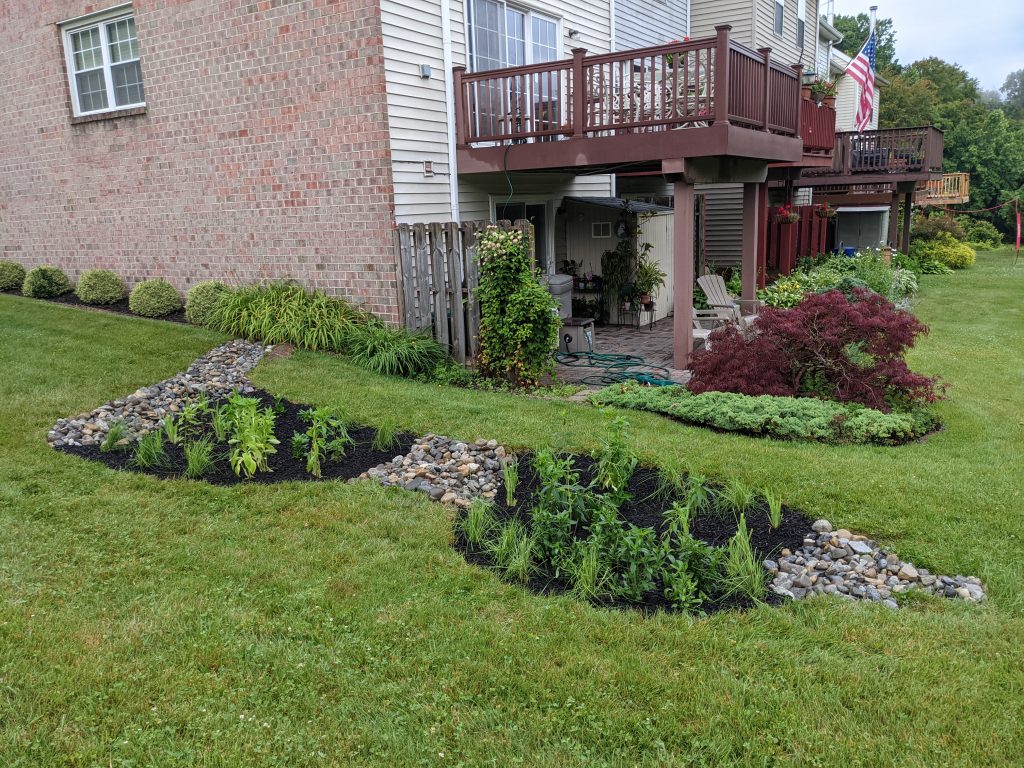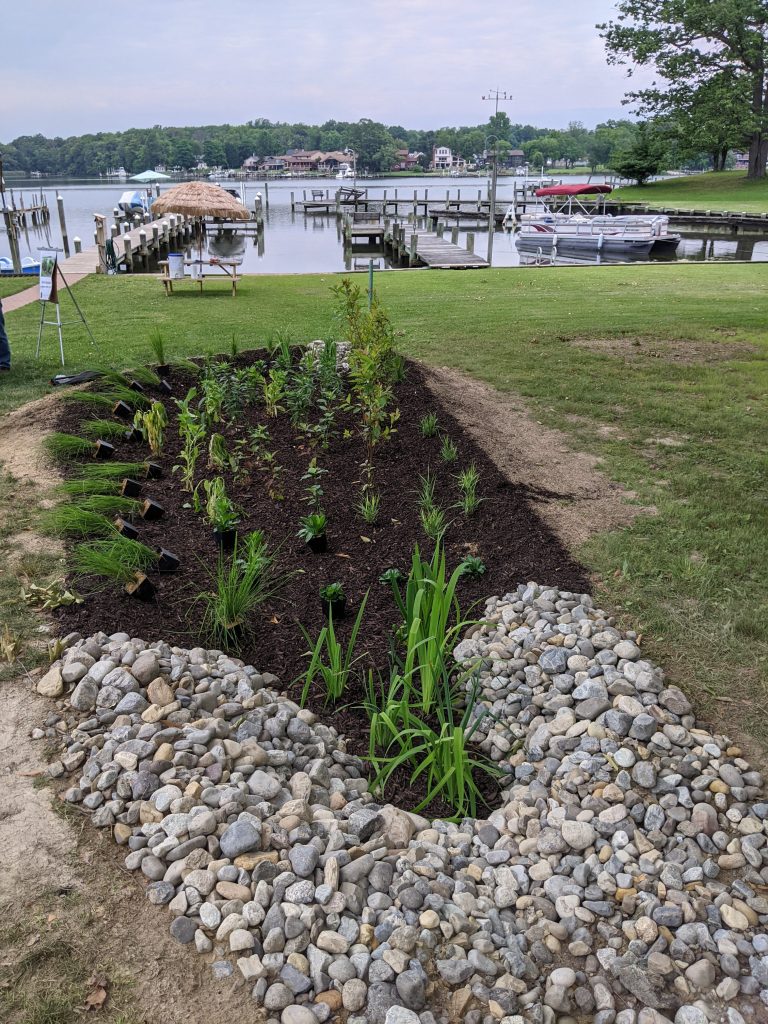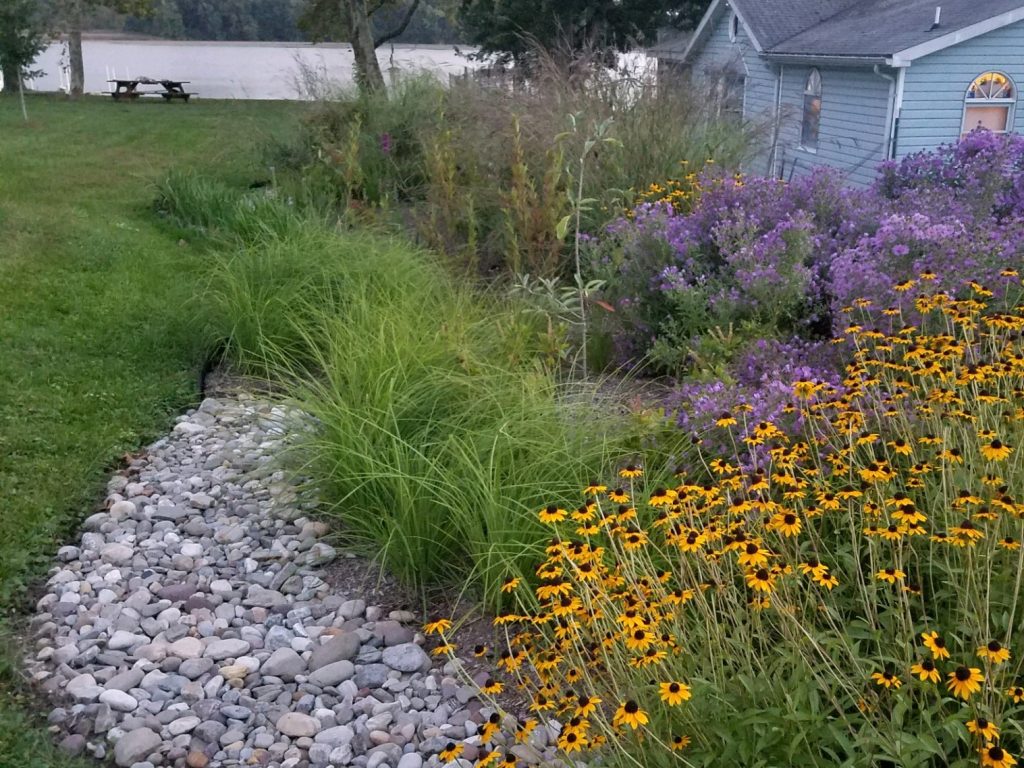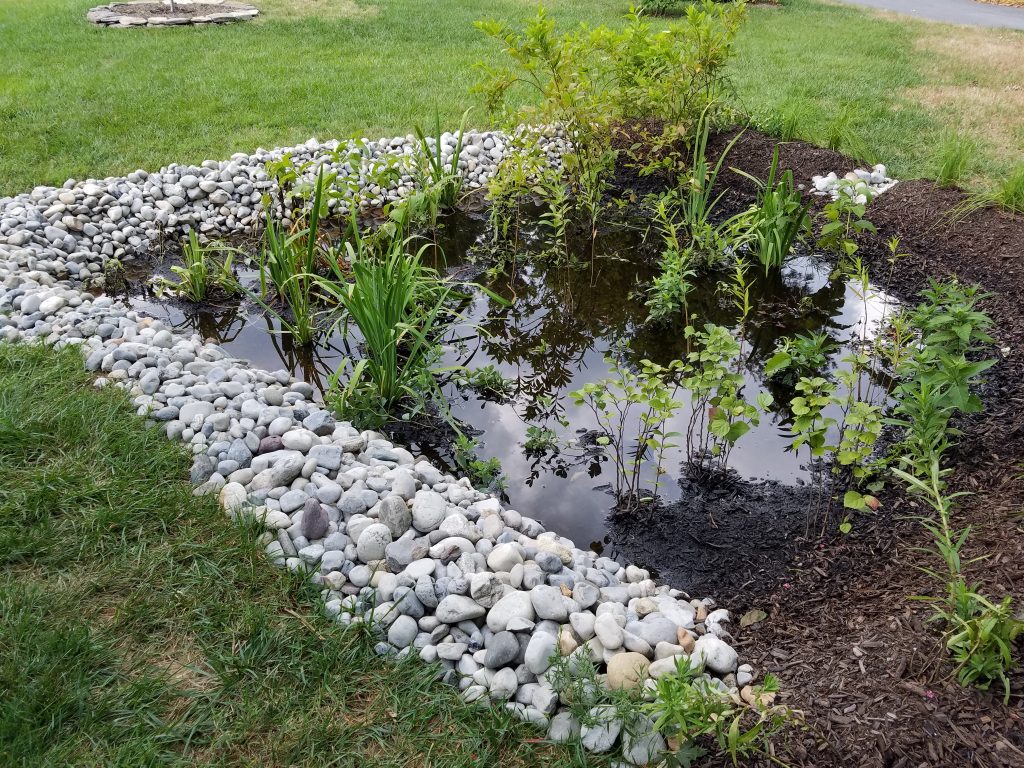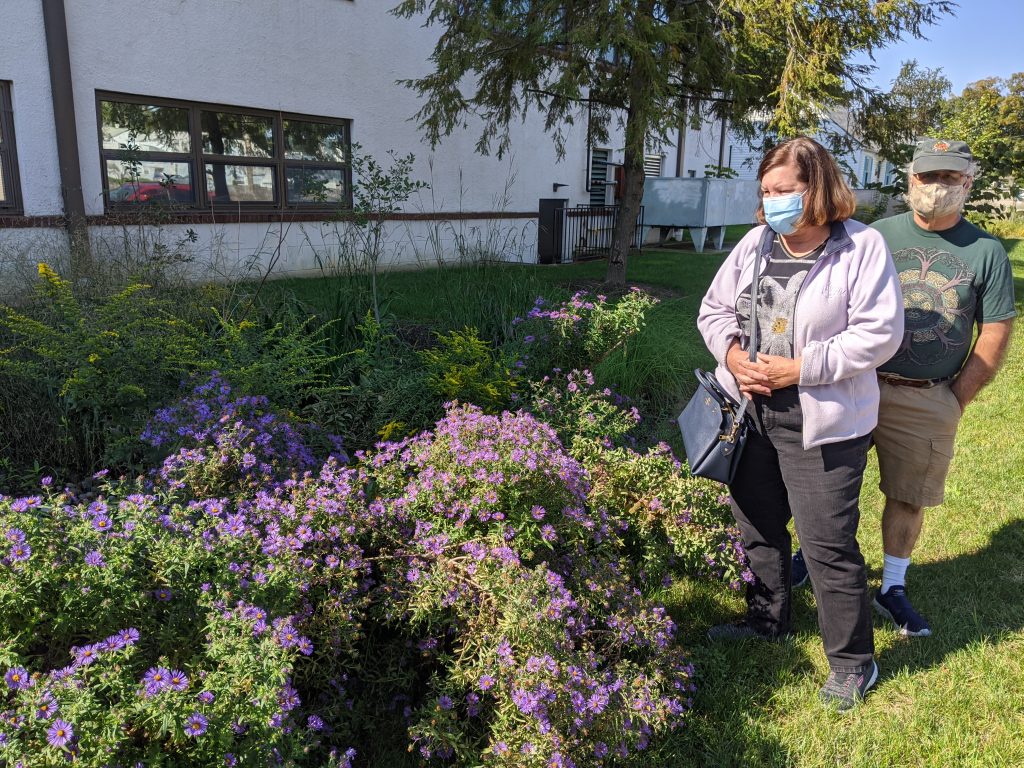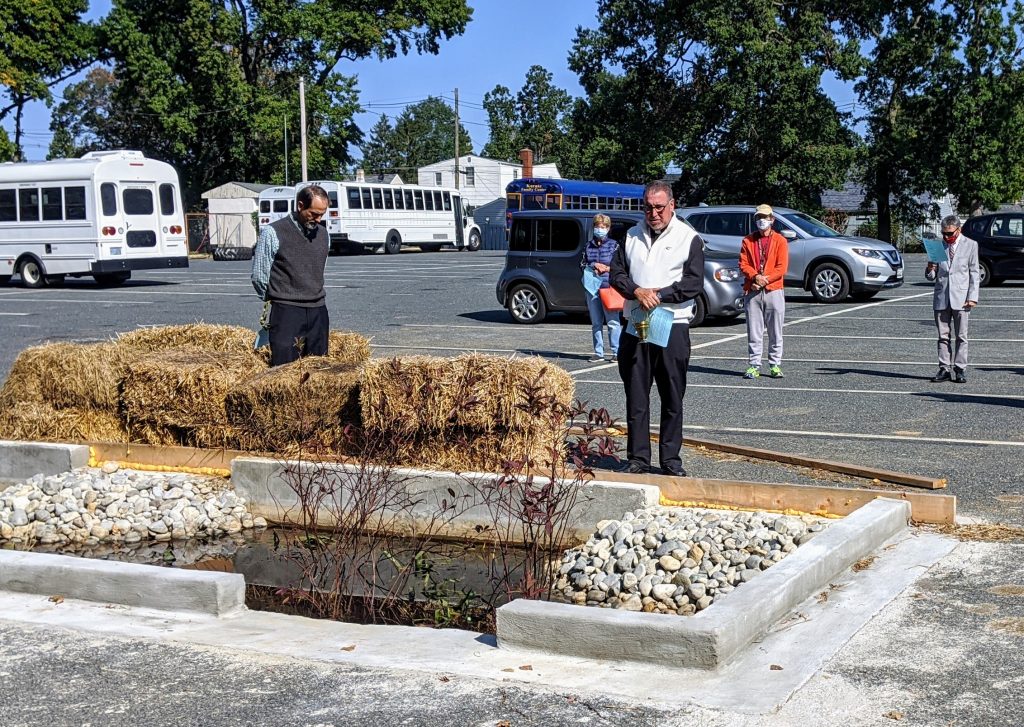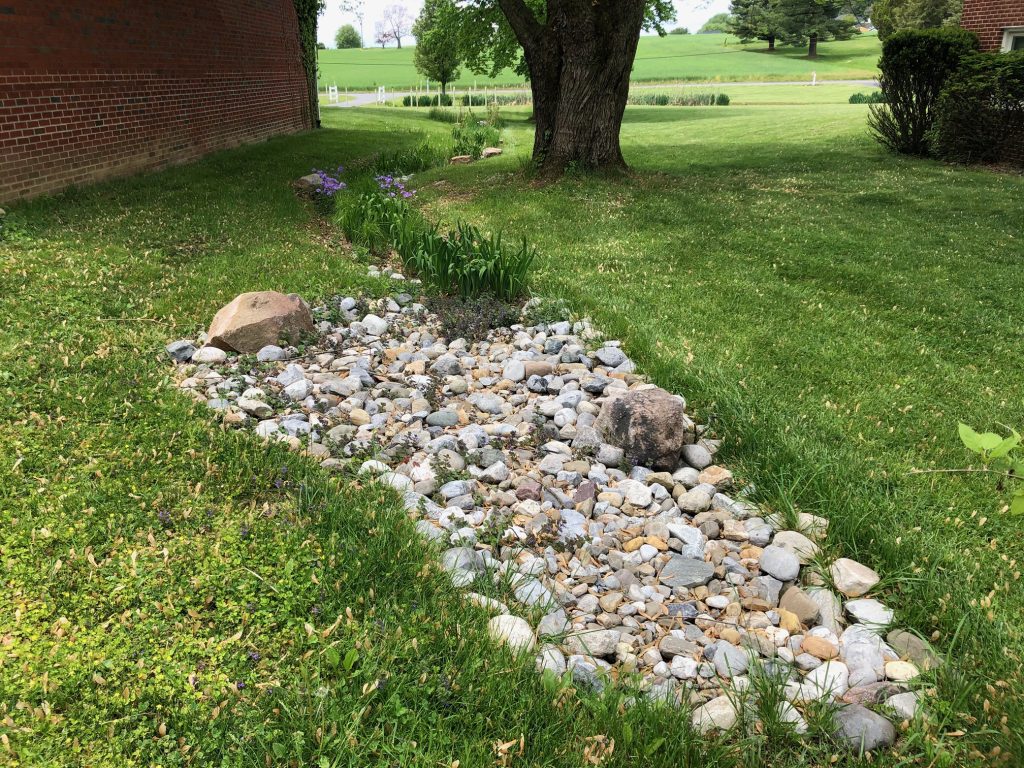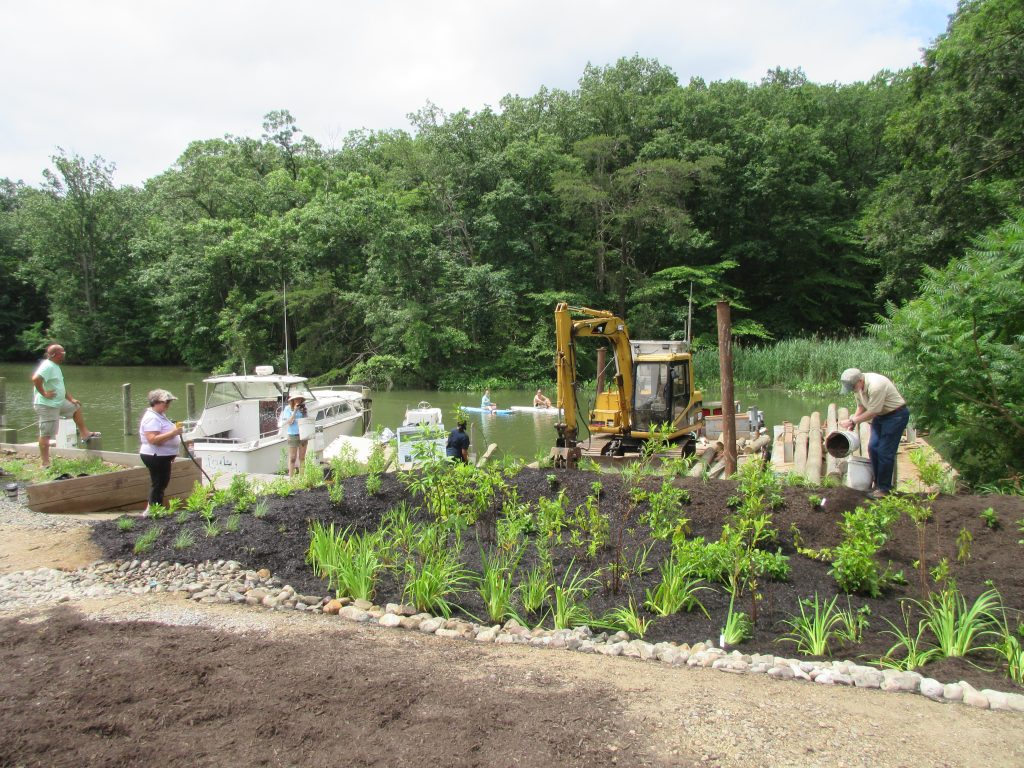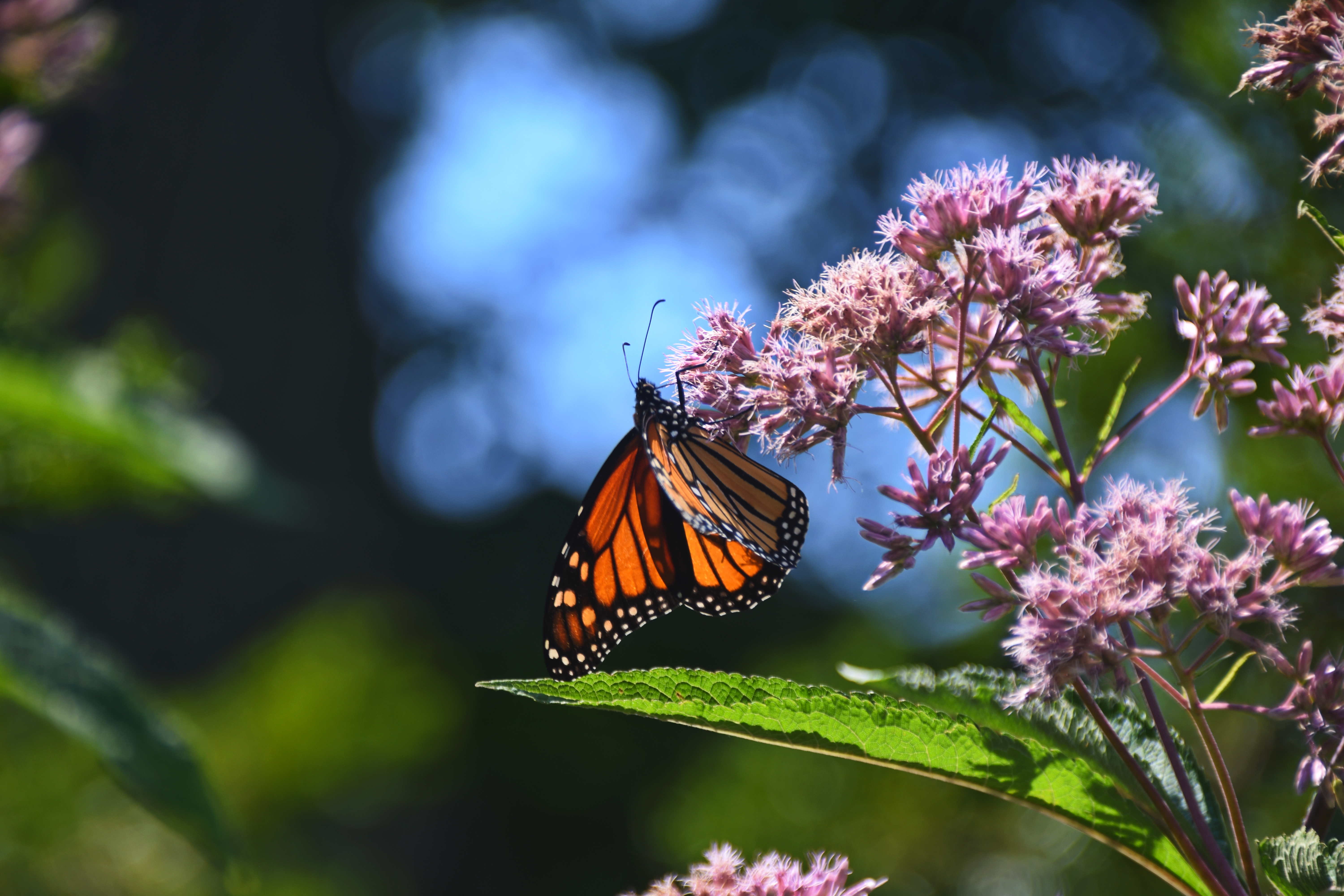
Grow Clean Water in Your Backyard
Conservation gardens feature a variety of native plants that provide food and habitat for butterflies, birds, and other wildlife local to the Gunpowder watershed. Native plants are adapted to Maryland's climate, so they can handle our seasonal droughts with little watering and don't need as much fertilizer to grow in local soils. Less fertilizer means less nutrient pollution in the Chesapeake Bay.
The Gunpowder Valley Conservancy (GVC) has designed over 280 conservation gardens as part of its Clear Creeks Project and Jennifer Branch Preservation Project (2009-2011). GVC offers three types of conservation garden:
GVC conservation gardens have been installed at homes, community green spaces, businesses, places of worship, wildlife organizations, and golf courses. We currently have grant funding through 2026 to install conservation gardens within our Clear Creeks Project area.
- Sign up today for a FREE site assessment and our professional landscape design team will meet with you to determine which practices are best for your property.
- Attend a GVC garden workshop to learn about the value of adding native plants to your landscape
- Visit our Native Plant FAQ page for local resources
If you property is tentatively suitable for a rain garden, please complete our Soil Percolation form as soon as possible.
Bayscapes
Bayscapes–a term coined by the Alliance for the Chesapeake Bay-are beautiful landscapes that protect local waterways. Bayscapes replace lawn with native plants that support wildlife, reduce landscape maintenance, and filter rain water from your yard, driveway, roof, or other hard surfaces. Bayscapes are strategically planted in areas that will intercept and filter rainwater, which in turn reduces water pollution, prior to the water entering a storm drain or nearest body of water.
Bayscapes are a low-maintenance alternative to traditional landscaping:
- Less water: Bayscape gardens typically require little watering during seasonal droughts. Unlike turfgrass, most native plants have deep root systems that can reach groundwater, making them less reliant on irrigation.
- Less fertilizer: Since native plants are adapted to Maryland's soils, they don't need as much fertilizer. Less fertilizer also means less nutrient pollution in the Chesapeake Bay.
- Less lawn to mow!
Bayscapes are also beautiful and environmentally-friendly!
- Beautify your yard with colorful native trees, shrubs, flowers, and/or grasses.
- Harvest fresh produce from your edible Bayscape.
- Provide habitat for native pollinators like hummingbirds, bees, and butterflies
Rain Gardens
A rain garden is a beautiful and functional solution to stormwater runoff. Water-loving native flowers, grasses, shrubs, and/or trees are planted in a low spot on a property to absorb and filter rainwater. A typical rain garden is designed to capture water from a 1" rain storm and drain within 24-28 hours of a rain event.
Promote flowers not flooding! Stormwater runoff is the water that flows over hard (impervious) surfaces, including roads, rooftops and driveways, to the storm drains or directly to a water body. This excess water can easily become polluted by automotive oils, garbage, sediment, and lawn chemicals as it flows through developed areas. Flooding has become a common problem in our communities due to the loss of natural areas that allow rain water to soak back into the ground.
Rain gardens are a great solution! When you plant a rain garden on your property you are:
- Promoting clean water by filtering storm water runoff before it reaches local waterways
- Improving water drainage issues
- Creating an attractive landscape that enhances the community
- Supporting native plants and wildlife, including pollinators
- Reducing nutrient pollution to the Chesapeake Bay by using native plants that don't require fertilizer
- Reducing lawn maintenance
Micro-bioretention Practice (MBRs)
Micro-bioretention practices (MBRs) are similar to rain gardens but have additional features to treat larger volumes of stormwater runoff from parking lots and buildings.
MBRs are ideal for solving large-scale flooding problems on commercial property, but can also be implemented at residential sites with poor soil.
MBRs incorporate engineering features like a stone layer or underdrain to capture and temporarily hold large volumes of stormwater running off of impervious surfaces. The stone and underdrain layers help to move the runoff deep into the soil to recharge groundwater. Compacted soil is removed from the site and replaced with a soil mixture that is more effective at absorbing water.
Native plants in the garden layer of the MBR take up excess nutrients from the runoff, keeping pollutants from entering our waterways. Native plants require no fertilizer and minimal water once they are established, and they attract beneficial pollinators and butterflies.

